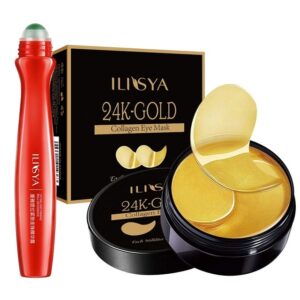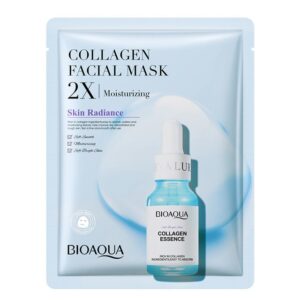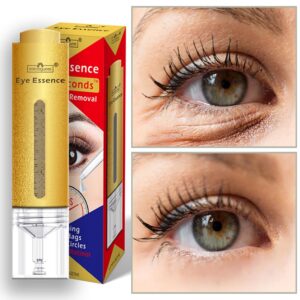Skin Care Routine for a Radiant and Youthful Complexion

Are you tired of dull and aging skin? Do you dream of achieving a radiant and youthful complexion? Look no further! In this article, we will unveil the ultimate skin care routine that will transform your skin and bring out its natural beauty. We all know that our skin is constantly exposed to harmful environmental factors and the stresses of everyday life. But with the right care and products, you can turn back the clock and restore your skin’s youthful glow.
From cleansers to serums, moisturizers to sunscreen, we will guide you through each step of the process, providing expert tips and recommendations along the way. Get ready to say goodbye to fine lines, dark spots, and uneven texture. Say hello to a rejuvenated, vibrant, and radiant complexion that will make you feel confident and beautiful. Let’s dive into the world of skin care and unlock the secrets to a youthful glow!
Importance of a Skin Care Routine
Taking care of your skin should be an essential part of your daily routine. Your skin is the largest organ of your body and acts as a protective barrier against external elements. A consistent skin care routine can help maintain the health and appearance of your skin, preventing premature aging and other skin concerns.
Having a skin care routine is especially important because our skin is constantly exposed to harmful environmental factors such as pollution, UV rays, and free radicals. These factors can lead to the breakdown of collagen and elastin, causing wrinkles, fine lines, and sagging skin. By following a proper skin care routine, you can counteract the effects of these external stressors and keep your skin looking youthful and radiant.
Understanding Your Skin Type
Before diving into a skin care routine, it’s important to understand your skin type. There are five main skin types: normal, oily, dry, combination, and sensitive. Each skin type has its own specific needs and requires different products and treatments.
Normal skin is well-balanced, with a healthy complexion and minimal skin concerns. Oily skin tends to produce excess sebum, leading to shine and potential acne breakouts. Dry skin lacks moisture and can feel tight and flaky. Combination skin has both oily and dry areas, with an oily T-zone and drier cheeks. Lastly, sensitive skin is prone to irritation and reacts easily to certain ingredients.
Identifying your skin type will help you choose the right products and create a tailored skin care routine that addresses your skin’s specific needs.
Steps for a Basic Skin Care Routine
A basic skin care routine consists of three essential steps: cleansing, toning, and moisturizing. These steps should be performed twice a day, in the morning and evening, to keep your skin clean, balanced, and hydrated.
- Cleansing
Cleansing is the first and most crucial step in any skin care routine. It removes dirt, impurities, and excess oil from the skin’s surface, preventing clogged pores and breakouts. Choose a gentle cleanser that suits your skin type. Foaming cleansers work well for oily skin, while cream or gel cleansers are more suitable for dry or sensitive skin.
To cleanse your face, wet it with lukewarm water and apply a small amount of cleanser. Gently massage the cleanser onto your skin in circular motions, paying extra attention to areas prone to oiliness or makeup build-up. Rinse thoroughly with water and pat your face dry with a soft towel.
- Toning
Toning is an often-overlooked step in a skin care routine, but it plays a crucial role in rebalancing the skin’s pH level and preparing it for the next steps. Toners can also help remove any remaining impurities that the cleanser might have missed.
Choose a toner that is alcohol-free and suits your skin type. For oily skin, look for toners with ingredients like witch hazel or salicylic acid to control excess oil production. Dry or sensitive skin types can benefit from hydrating toners that contain ingredients like hyaluronic acid or rosewater.
To use a toner, pour a small amount onto a cotton pad and gently swipe it across your face, avoiding the eye area. Allow the toner to fully absorb into your skin before proceeding to the next step.
- Moisturizing
Moisturizing is a crucial step in any skin care routine as it helps to hydrate and nourish the skin, keeping it plump and supple. Regardless of your skin type, everyone can benefit from using a moisturizer.
Choose a moisturizer that is suitable for your skin type and contains ingredients like hyaluronic acid, ceramides, or glycerine to lock in moisture. For oily skin, opt for lightweight, oil-free moisturizers, while dry skin types may benefit from richer, cream-based formulas.
After toning, apply a small amount of moisturizer to your face and neck, gently massaging it into your skin using upward motions. Allow the moisturizer to fully absorb before applying any other products or makeup.
Now that you have a basic skin care routine in place, let’s explore additional steps that can take your routine to the next level.
Additional Steps for a Comprehensive Skin Care Routine
While a basic skin care routine is essential, incorporating additional steps can target specific concerns and provide enhanced results. Here are a few additional steps you can add to your routine:
- Exfoliating

Exfoliation is the process of removing dead skin cells from the surface of your skin, revealing a brighter and smoother complexion. It can also help unclog pores, reduce the appearance of fine lines, and improve the absorption of other skin care products.
There are two main types of exfoliation: physical and chemical. Physical exfoliation involves using a scrub or brush to manually remove dead skin cells. Chemical exfoliation, on the other hand, involves using products that contain ingredients like alpha-hydroxy acids (AHAs) or beta-hydroxy acids (BHAs) to dissolve dead skin cells.
When exfoliating, be gentle and avoid over-exfoliating, as it can lead to irritation and damage to the skin. Depending on your skin type and concerns, exfoliate 1-3 times a week to maintain a healthy and glowing complexion.
- Masking

Face masks are a great way to pamper your skin and address specific concerns. From hydrating masks to clay masks, there are various types of masks available for different skin types and concerns.
Hydrating masks are great for dry or dehydrated skin, as they provide an extra boost of moisture. Clay masks, on the other hand, are ideal for oily or acne-prone skin, as they help absorb excess oil and unclog pores. Look for masks that contain ingredients like hyaluronic acid, aloe vera, or kaolin clay, depending on your skin’s needs.
Apply a thin layer of the mask to your face, avoiding the eye and lip areas. Leave it on for the recommended time and then rinse it off with lukewarm water. Follow up with your regular skin care routine.
- Serums

Serums are lightweight, highly concentrated formulas that contain active ingredients to target specific skin concerns, such as wrinkles, dark spots, or uneven texture. They are designed to penetrate deeply into the skin and deliver powerful ingredients directly to the targeted areas.
When choosing a serum, look for ingredients like vitamin C, retinol, or hyaluronic acid, depending on your skin’s needs. Apply a few drops of serum to your face and gently pat it into your skin, allowing it to fully absorb before applying moisturizer.
By incorporating exfoliation, masking, and serums into your routine, you can address specific concerns and enhance the overall health and appearance of your skin.
Choosing the Right Products for Your Skin Type
With countless skin care products available on the market, choosing the right ones for your skin type can be overwhelming. Here are a few tips to help you make informed decisions:
- Read the labels: Look for products that are specifically formulated for your skin type and address your specific concerns. Avoid products that contain harsh ingredients or potential irritants.
- Patch test: Before introducing a new product to your routine, perform a patch test on a small area of your skin to check for any adverse reactions. This is especially important if you have sensitive skin.
- Seek recommendations: Consult with a dermatologist or skin care professional who can assess your skin type and recommend suitable products.
- Research and reviews: Do your research and read reviews from trusted sources to get insights into the effectiveness and quality of a product.
Remember, what works for one person may not work for another, so it’s important to find products that are tailored to your skin’s specific needs.
Morning vs. Evening Skin Care Routines
While the basic steps of cleansing, toning, and moisturizing remain the same in both morning and evening routines, there are a few differences to consider.
In the morning, focus on protecting your skin from environmental factors and preparing it for the day ahead. Start by cleansing your face to remove any impurities or sweat that accumulated overnight. Follow up with a toner to rebalance your skin’s pH level and a lightweight moisturizer to hydrate and protect your skin.
Before stepping out of the house, don’t forget to apply sunscreen. Sunscreen is an essential step in any skin care routine, as it helps protect your skin from harmful UV rays and prevents premature aging. Choose a broad-spectrum sunscreen with an SPF of 30 or higher and apply it generously to your face and exposed skin.
In the evening, the focus is on repairing and rejuvenating your skin while you sleep. Start by thoroughly cleansing your face to remove makeup, dirt, and pollution. Follow up with a toner to remove any remaining impurities and balance your skin. Apply any targeted treatments, such as serums or acne treatments, and finish with a moisturizer to hydrate your skin overnight.
By adapting your routine to the morning and evening, you can optimize the benefits of your skin care products and ensure your skin stays healthy and radiant throughout the day.
Targeted Skin Care for Specific Concerns
In addition to a general skin care routine, targeting specific concerns can help address common skin issues. Here are a few tips for targeting specific concerns:
- Acne-prone skin
If you have acne-prone skin, opt for gentle cleansers that contain salicylic acid or benzoyl peroxide to help unclog pores and control oil production. Avoid heavy or comedogenic moisturizers that can further clog pores.
Consider incorporating a spot treatment or acne serum with ingredients like tea tree oil or niacinamide to help reduce inflammation and control breakouts. Exfoliate regularly to remove dead skin cells and prevent pore blockages. Lastly, avoid touching your face and wash your pillowcases regularly to minimize the spread of bacteria.
- Aging skin
To combat signs of aging, look for products that contain retinol, peptides, or antioxidants like vitamin C or green tea extract. These ingredients can help stimulate collagen production, reduce the appearance of wrinkles, and improve overall skin texture.
Incorporate a targeted anti-aging serum into your routine, applying it before your moisturizer. Consider using a night cream that contains ingredients like hyaluronic acid or glycolic acid to hydrate and exfoliate your skin while you sleep. Protect your skin from sun damage by applying sunscreen daily, even on cloudy days.
- Sensitive skin
If you have sensitive skin, opt for gentle, fragrance-free products that are specifically formulated for sensitive skin types. Look for soothing ingredients like chamomile, aloe vera, or oatmeal.
Avoid harsh scrubs or physical exfoliants that can irritate your skin. Instead, opt for chemical exfoliants that gently dissolve dead skin cells. Patch test new products before applying them to your entire face and avoid using multiple new products at once to identify any potential irritants.
Remember, consistency is key when targeting specific concerns. Results may take time, so be patient and persistent with your skin care routine.
Incorporating Sunscreen into Your Skin Care Routine
Sunscreen is an essential step in any skin care routine, regardless of your skin type or concerns. It helps protect your skin from harmful UV rays, which can cause sunburn, premature aging, and an increased risk of skin cancer.
When choosing a sunscreen, opt for a broad-spectrum formula that protects against both UVA and UVB rays. Look for an SPF (sun protection factor) of 30 or higher. If you have oily or acne-prone skin, choose a lightweight, non-comedogenic sunscreen to prevent clogged pores.
Apply sunscreen generously to your face and exposed skin at least 15 minutes before sun exposure. Reapply every two hours, or more frequently if you are sweating or swimming. Don’t forget to apply sunscreen to often neglected areas, such as your neck, ears, and the back of your hands.
Incorporating sunscreen into your daily routine will not only protect your skin from sun damage but also help maintain a youthful and healthy complexion.
Tips for Maintaining a Consistent Skin Care Routine
Now that you have a comprehensive skin care routine in place, it’s important to maintain it consistently to achieve the best results. Here are a few tips to help you stay on track:
- Make it a habit: Incorporate your skin care routine into your daily schedule, just like brushing your teeth. Consistency is key when it comes to seeing improvements in your skin.
- Keep it simple: Stick to the essential steps of cleansing, toning, and moisturizing, and gradually add additional steps as needed. A simple and consistent routine is more likely to be followed.
- Set reminders: If you often forget to do your skin care routine, set reminders on your phone or leave sticky notes as a visual cue.
- Customize for your lifestyle: Adapt your routine to fit your lifestyle. If you’re always on the go, opt for travel-sized products or invest in a skincare fridge to keep your products fresh and portable.
- Be patient: Results may not be immediate, especially when targeting specific concerns. Give your skin time to adjust to new products and treatments, and don’t give up too quickly.
Remember, consistency and patience are key when it comes to achieving a radiant and youthful complexion.
Conclusion
Congratulations! You’ve now unlocked the secrets to a youthful glow and radiant complexion. By following the ultimate skin care routine outlined in this article, you can transform your skin and achieve the complexion of your dreams.
Start by understanding your skin type and selecting products that suit your skin type.
